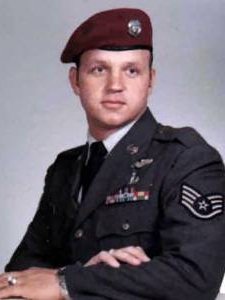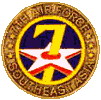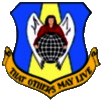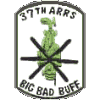| |
|
|
|
James Richard Thomas
Technical Sergeant
37TH ARRS, 3RD AIR RESCUE GROUP, 7TH AF United States Air Force Fort Walton Beach, Florida July 05, 1943 to November 25, 1971 JAMES R THOMAS is on the Wall at Panel W2, Line 72 See the full profile or name rubbing for James Thomas |
  |

|



| |
|
In August 1961, at the age of 18 and fresh out of High School, Jim Thomas joined the United States Air Force. After basic training, he started his military career as a Reciprocating Engine Mechanic based at Hickam AFB, Hawaii for the 76th ARSq. While stationed at Hickam, he made friends with several men in his squadron who were with an elite group known as PARARESCUE. He admired their look and their commitment to saving others and upon re-enlistment in 1965, he was accepted into Pararescue Training. Over the next 17 months, he would learn the following: The Pararescue/Combat Control Indoctrination Course (10 weeks), US Army Airborne Parachutist School (3 weeks), US Army Combat Divers School (4 weeks), US Navy Underwater Egress Training (1 day), US Air Force Basic Survival School (2 ï¿ 1/2 weeks), US Army Military Free fall Parachutist School (5 weeks), Special Operations Combat Medic Course (22 weeks), Pararescue Recovery Specialist Course (20 weeks). The day he graduated from PJ school was one of the happiest days of his life. He was so proud to wear the Maroon Beret which signifies the Pararescuemen, he walked around base with a big smile on his face. He soon excelled in this field, and by 1968, he was an instructor at Eglin Air Force Base in Ft. Walton Beach, Florida. He was also a prime team member on the NASA Apollo Launch Site Recovery Force for Apollo Missions 7, 8, 9, 10, 11, 12, 13 and 14. In March 1971 he left his wife, two daughters, mother-in-law and sister for duty in Vietnam.
Please visit the
From his daughter, |
|
You and your family are always in my thoughts and prayers....
R. Dominguez Jr. |
A Note from The Virtual WallOn 25 November 1971, two CH-53 helicopters of the 37th ARRS, call signs JOLLY GREEN 70 and 73, departed Bien Hoa Airbase to pick up survivors of a crash near Can Tho (variously described as a CH-46 CHINOOK or C-7 CARIBOU). During the pickup JOLLY GREEN 70 took hits from enemy fire. After dropping off the crash survivors at Can Tho, the crew of JOLLY GREEN 70 checked their aircraft and decided it was capable of the return flight to Bien Hoa Airbase. JOLLY GREEN 70 was crewed by
Two crewmen (Theriot and Sneed) survived the crash and reported that the aircraft had been hit by enemy ground fire. There were reports from a local fisherman that a third person was sighted alive in the water after the crash; this person was tentatively identified as TSGT Thomas. Salvage efforts began at once, with Vietnamese divers locating and searching the submerged wreckage. The aircraft was raised with cables and the bodies of Major Swenck, Captain George, and A1C Prose recovered. While the wreckage was being towed to a more secure location, the cabling broke and the wreckage sank once more. On 27 November, divers once again searched the wreckage for Thomas' body, and the wreck was raised a second time for a further search. Thomas was not found, nor was he found during ground searches of the river banks downstream. His body was never recovered. (Sources: the Vietnam Helicopter Pilots Association, the POW Network, Task Force Omega, and James Henton's compilation of Air Force helicopter losses.) |
| Contact Us | © Copyright 1997-2019 www.VirtualWall.org, Ltd ®(TM) | Last update 08/15/2019. |